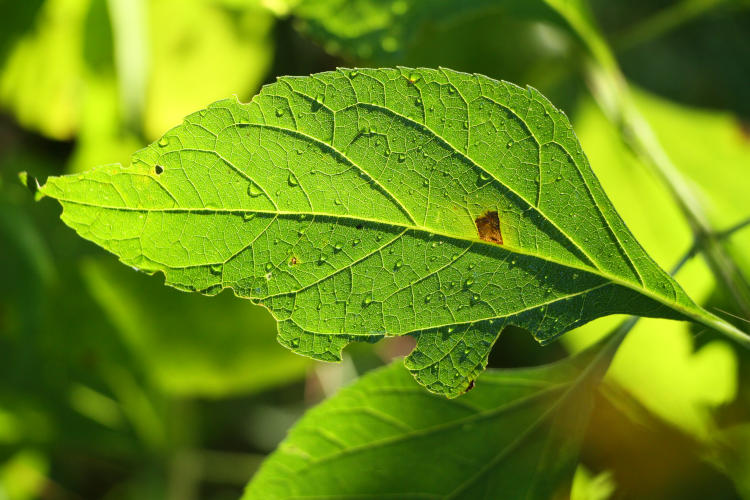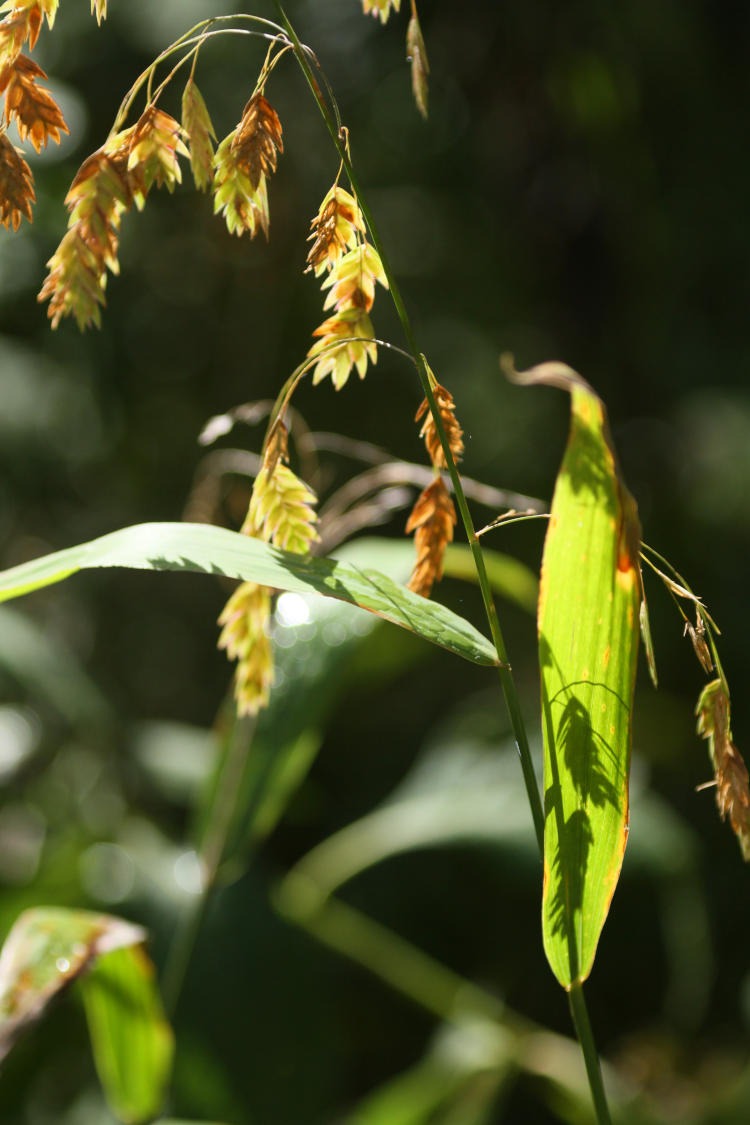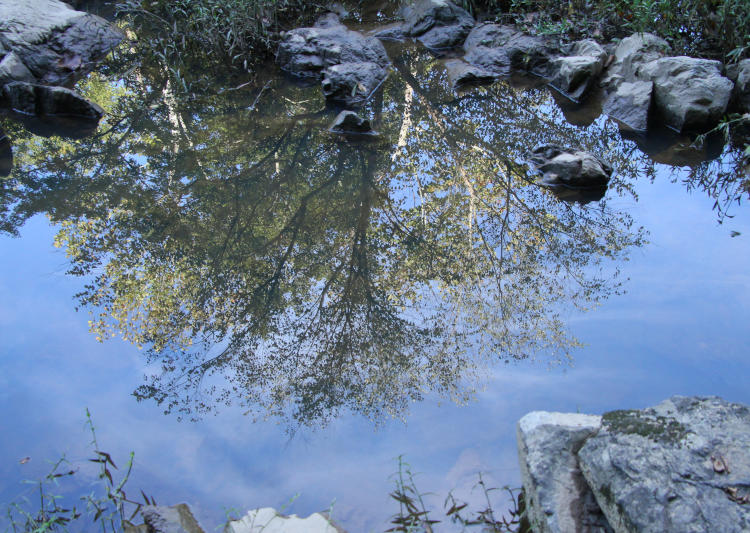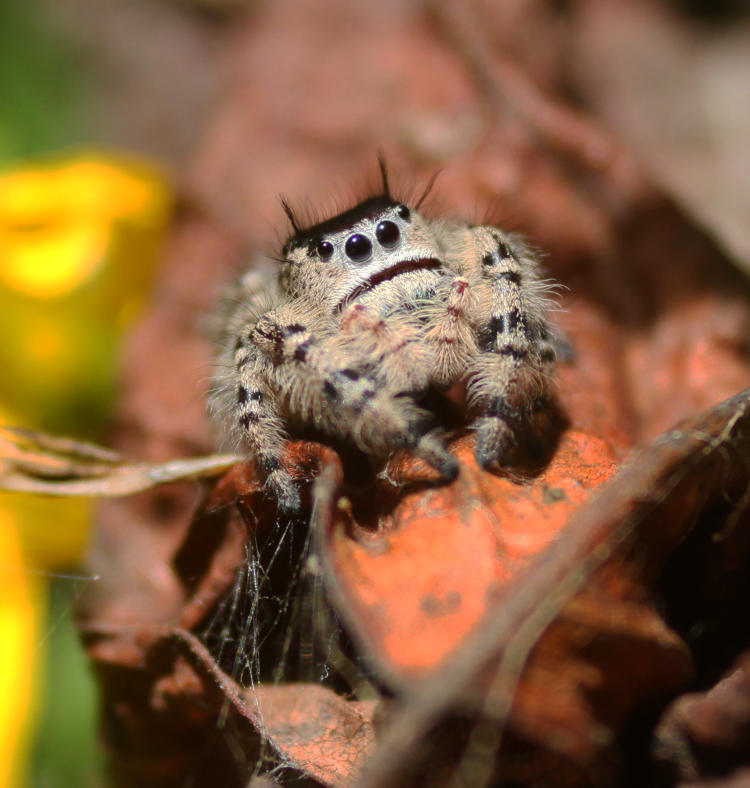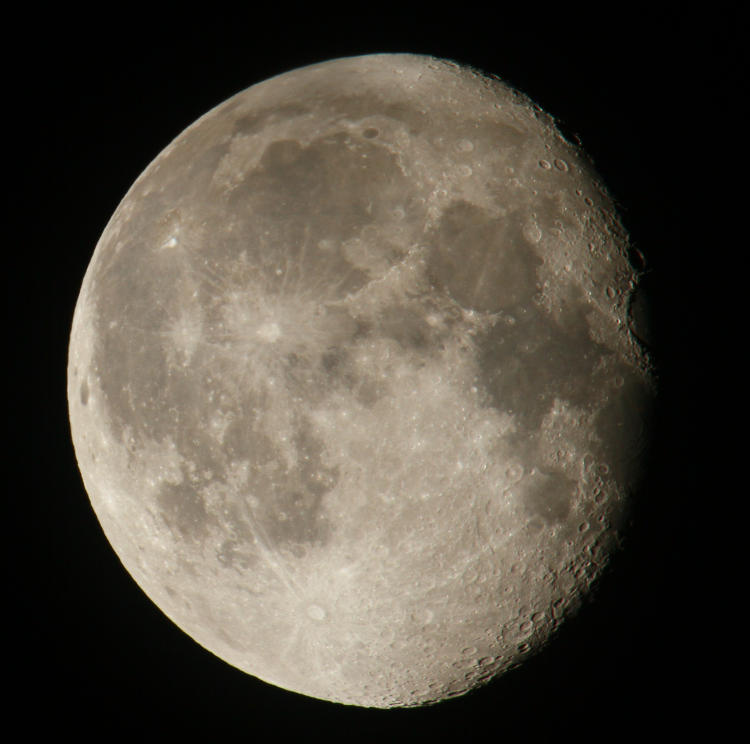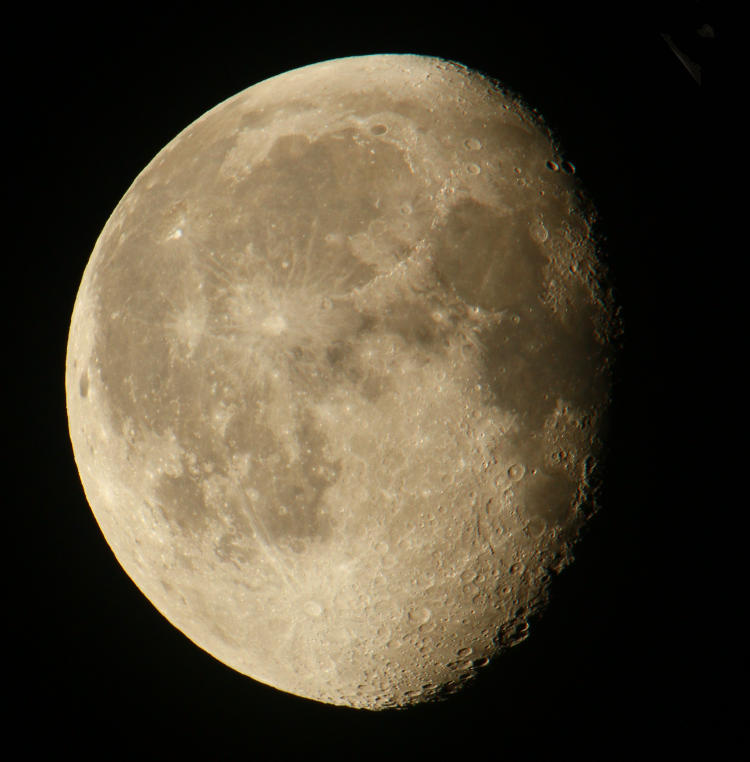I know I’ve been quiet, and it’s for a variety of reasons like projects, a bad keyboard, the waning conditions for critters, and simply that I’m only obtaining more photos of the same subjects. But then again, they’re still cool subjects, so I’m not going to let them languish in my folders for too long.
We’ll start with one from last month.
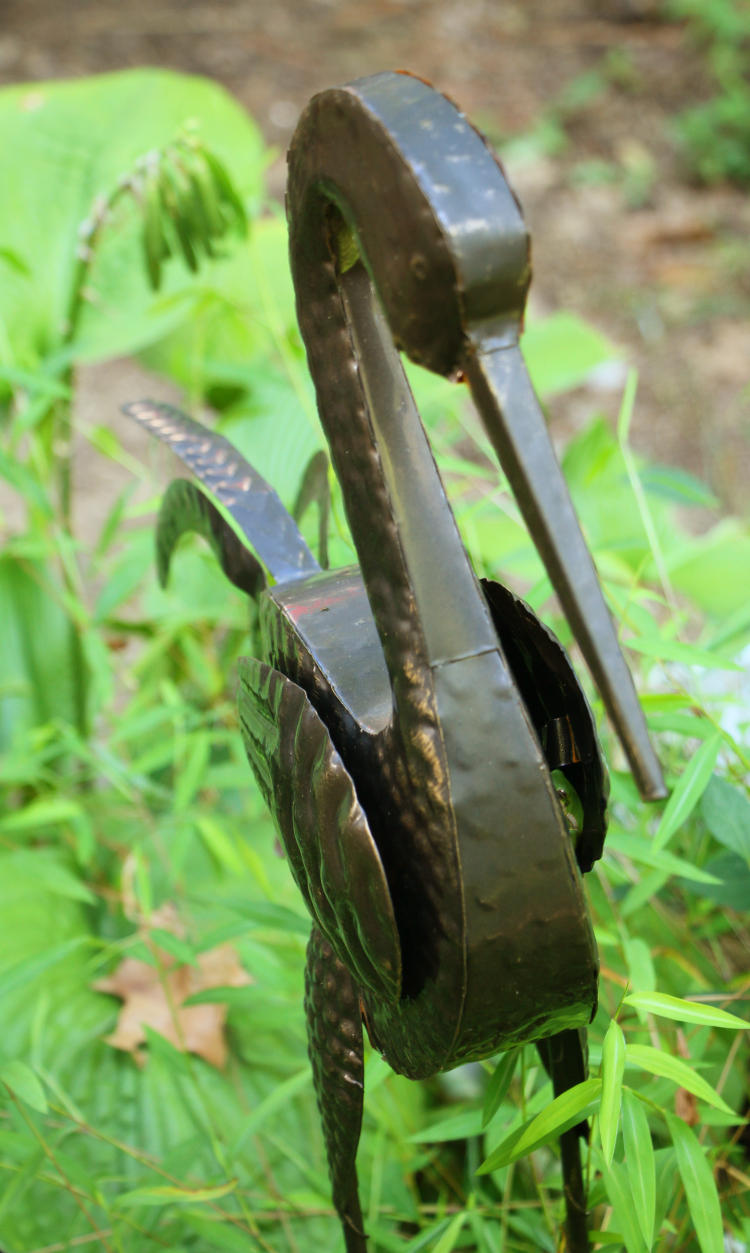
I like this one for the subtlety. For a while, the overnight temperatures were dropping kinda low and it had an effect on the denizens of Walkabout Estates, though you have to look hard to see this one. Not quite ready to call it quits for the season and find some soft earth to bury itself within, a juvenile green treefrog (Hyla cinerea) found a spot that reflected a little of its body heat back to itself, while also warming up quickly once the sun rose high enough, though since they’re nocturnal, the frog wouldn’t venture out again until nightfall, and a decently warm one at that.
The Girlfriend is fond of metal balance sculptures, indoors and out, and so we have several in the yard. Only a meter away from the fixed one above, one of these tipping, spinning works provided a daytime shelter for another specimen, who’s snuggled up to stepmom.
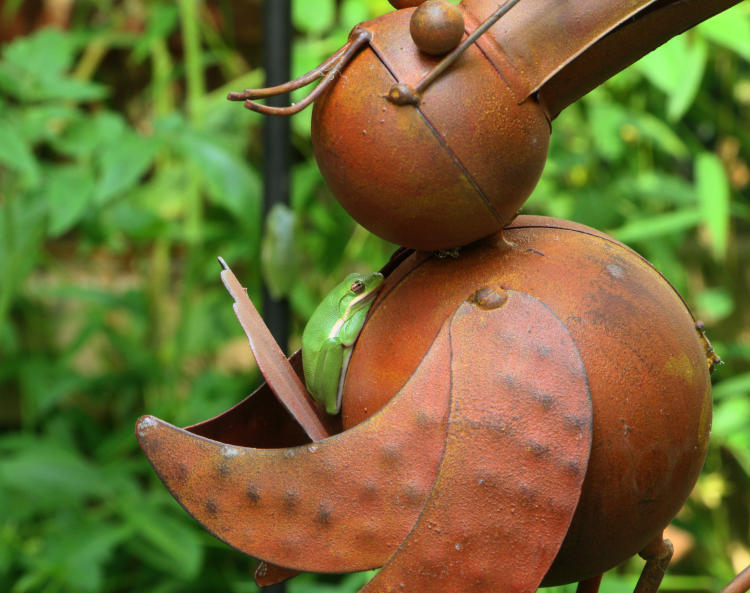
This one’s about half of adult size, so they seem to be doing just fine in the yard – really, we have a buttload of them now. This is faintly indicated by the fact that there’s two in the frame – see the second one? Yes, of course this was intentional. I’m offended that you even briefly entertained the possibility that it wasn’t.
But we need a closer look at our main subject.

This one’s tucked in so tight, the legs look painted on – it was really impressive. That night it ventured out for foraging, but returned to the alternate side of the sculpture, the counterpoint crow (I think that’s what they’re supposed to be) for the next day’s snooze. Meanwhile, those that sleep on the upright poles tend to switch around each morning, and even the one that routinely chooses the oak-leaf hydrangea out front will select different spots thereon. After about six times, I stopped escorting the green treefrogs out of the greenhouse, knowing from the varying sizes that there were at least three separate culprits, and it appears they know how to find their way out on their own (less so for the screened porch, but no one has discovered it so far this year.)
We’ll throw in a casual one from the other day.

While waiting to meet with a student at a local park, a quick movement near my feet caught my eye, and I managed a couple of frames of this tiny frog as it paused on a little twig. This is either a northern cricket frog (Acris crepitans) or southern cricket frog (Acris gryllus) – the differences are very subtle and not captured in this image, and their ranges overlap right through this portion of the state, apparently the Mason-Dixon Line for cricket frogs. It did not occur to me to say out loud, “The south will rise again,” and see if I was met with a whoop or a snicker. Next time.
[The depth of field might give a faint indication of scale here, but the frog was in the 10-12mm range, little more than a blob.]
When I featured a juvenile Carolina anole (Anolis carolinensis) earlier, I mentioned that it was the second I’d seen that night. The first was much more challenging, both to spot and to adequately capture on not-film (man, digital needs its own counterpart to the established film phrases.) Here was my initial frame:
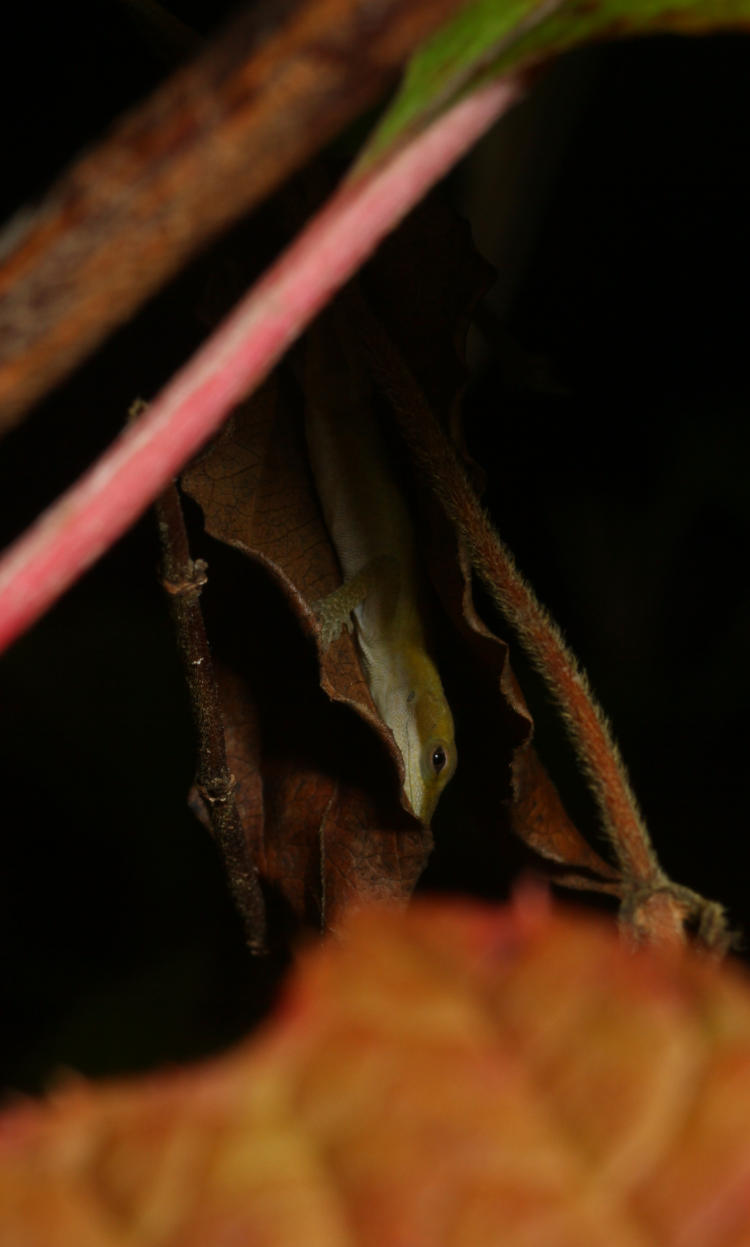
If it wasn’t for trying to get a good angle on a nearby treefrog, I probably wouldn’t have spotted this guy, tucked in between a pair of dead leaves for the night, but one particular angle illuminated its pale belly and caught my attention; dead leaves don’t often sport white stripes. Then, it was a matter of trying to get the flash unit to reach it, while tucked back among the large leaves of an oak-leaf hydrangea. Part of the difficulty was trying not to disturb the hydrangea at all so the anole wouldn’t get alarmed and scamper off. My second attempt was much worse.

You’re seeing most of the length of the body here, but the flash didn’t make it past the intervening leaf so we only have weak reflections reaching the anole. Pfeh.
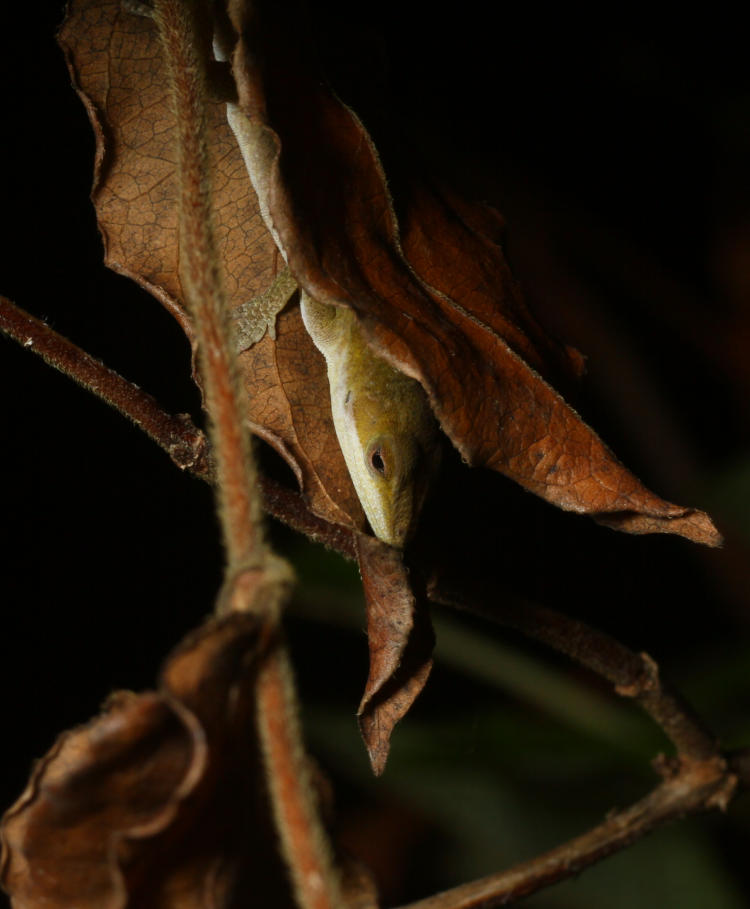
This is as good as it was gonna get, given the conditions – a ring flash would have worked the best just for reaching in there, but I wasn’t about to go scampering inside to get it. I’m lazy sometimes. Well, okay, all the time, but that includes sometimes.
The same anole from that earlier post made an appearance twice more, this time on the rose bush only a meter from the gardenia; last night I tried for a few more pics. I still like the initial ones better, mostly for the dew, but did get a portrait angle this time.
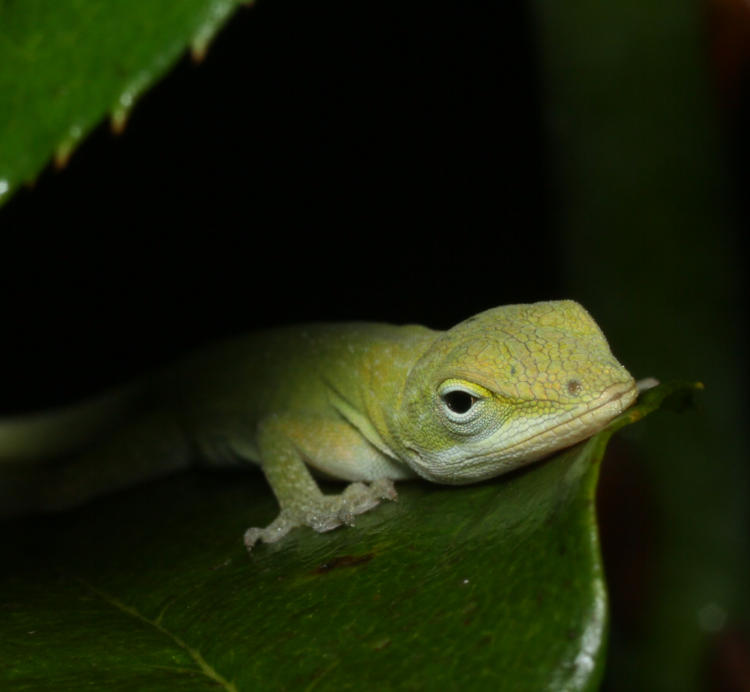
It opened its eyes because of the headlamp bobbing around, but didn’t show any apparent alarm, and quickly closed its eyes again as I left it alone. But before that, I switched to the other side of the rose bush to do the full body shot.

This particular rose bush has fairly small leaves, so you know this one isn’t big at all, but you knew that already anyway from the inclusion of the scale.
I was a little surprised to find it still on the bush after 10 AM this morning, though it was stirring now. And darker.
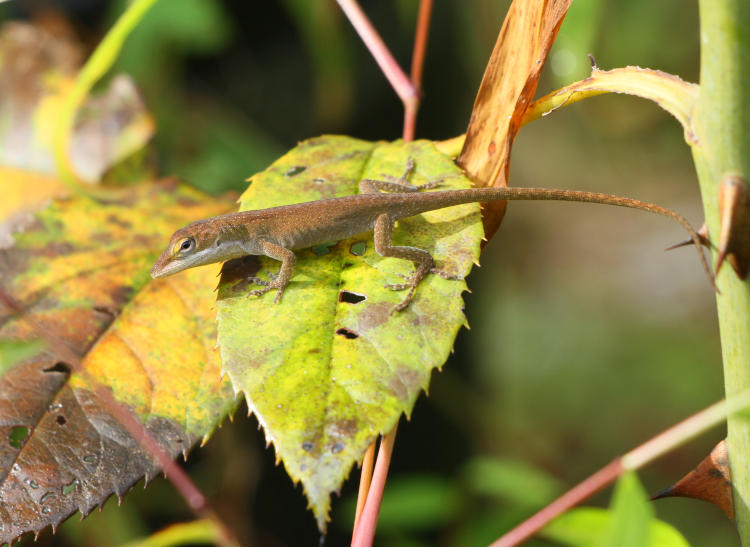
The color change from anoles isn’t necessarily camouflage, though it can serve that purpose, but more often either a mood indicator (mostly when another is around,) or an environmental thing, in this case quite possibly absorbing more solar radiation to warm itself up. It was aware that I was there, but I kept my movements to a minimum and it didn’t feel the need to flee.
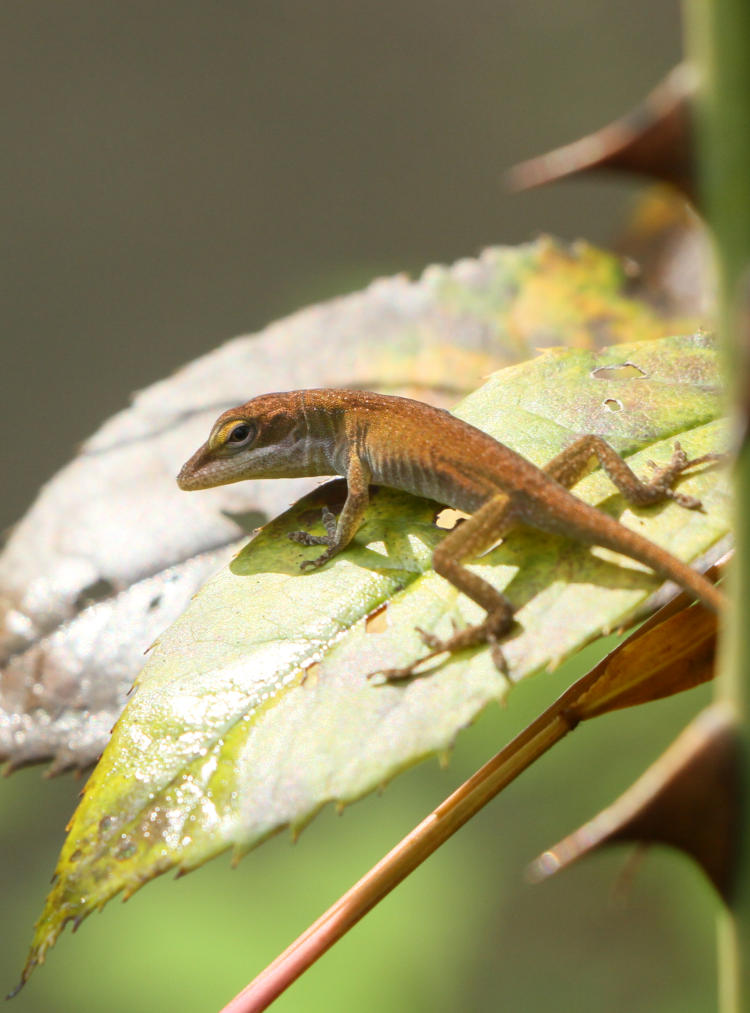
I did a couple of quick video clips as well, as it did a modicum of exploring, but these were handheld, so too shaky with wandering focus (actually my own body swaying back and forth outside of the narrow focus range,) so they might see duty when I have a more complete collection of clips demonstrating feeding or something, when I’m more prepared with the tripod and a comfortable angle. That means, not bending over awkwardly and trying to see the subject in the LCD on the back of the camera, but using the external monitor instead.
I started this post early this afternoon, and with one thing or another, only got back to it late in the evening – it’s almost midnight now, and I’m trying to close it out before then. But I will say that I did a quick check earlier, and the anole has switched over to the nearby delphinium flower for the night, so perhaps, if I get motivated tomorrow morning, I’ll try a little video stalking then – I really need to dedicate the effort to such things. We’ll see how lazy I am, I guess.
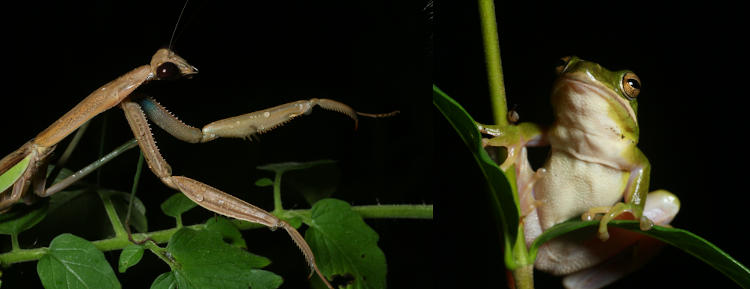




















































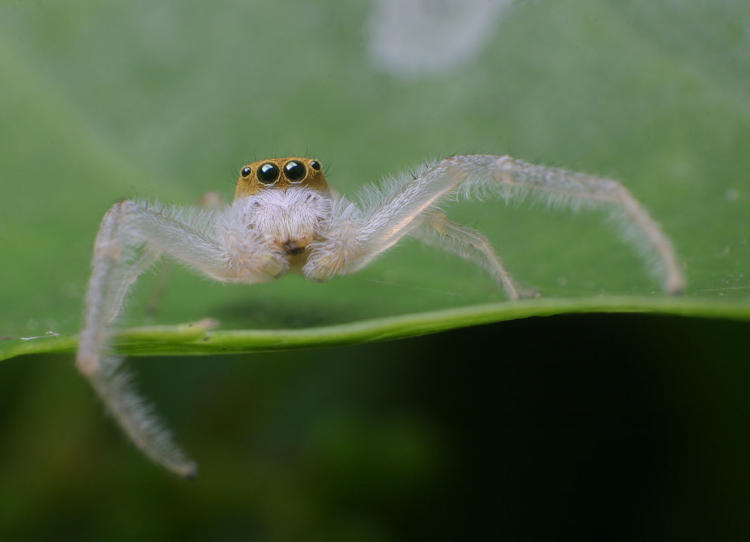











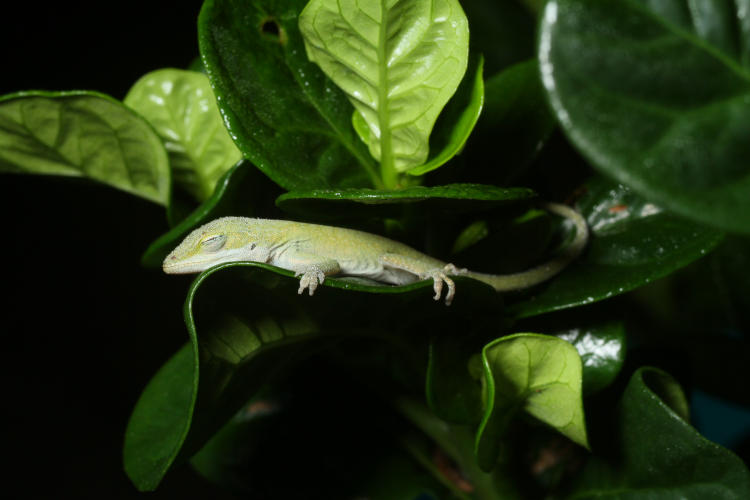
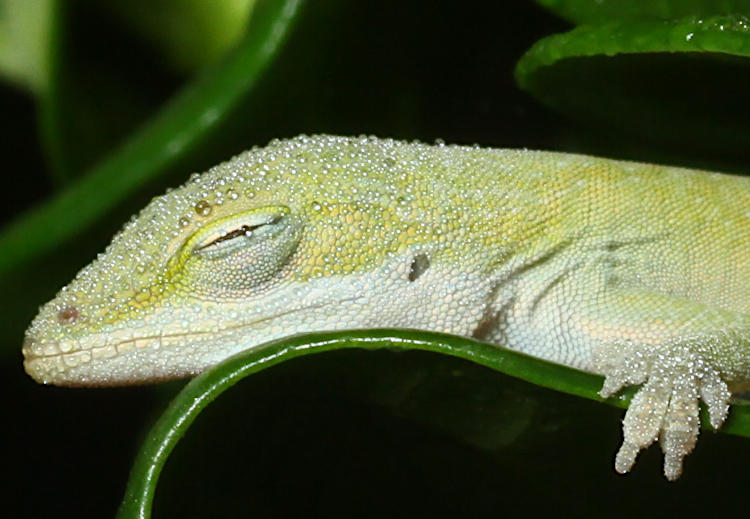
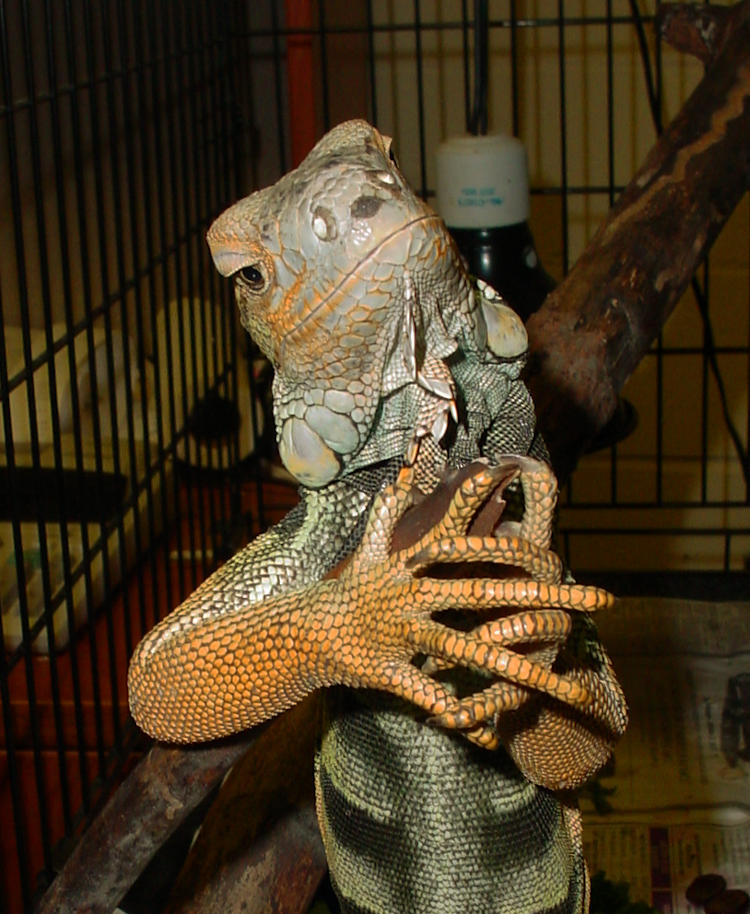
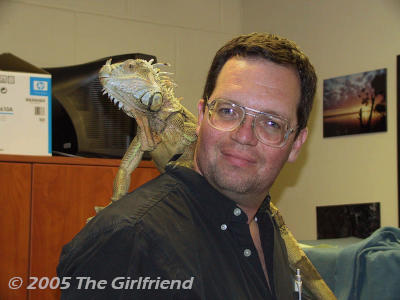 The image at right was taken within that time period, in the same office, but I’m not actually sure if it’s the same iguana or not – the EXIF info is long gone from these files. The blue blanket in the photo covers the iguana cage to keep it semi-tropical inside, which they desire, while you can see
The image at right was taken within that time period, in the same office, but I’m not actually sure if it’s the same iguana or not – the EXIF info is long gone from these files. The blue blanket in the photo covers the iguana cage to keep it semi-tropical inside, which they desire, while you can see 
